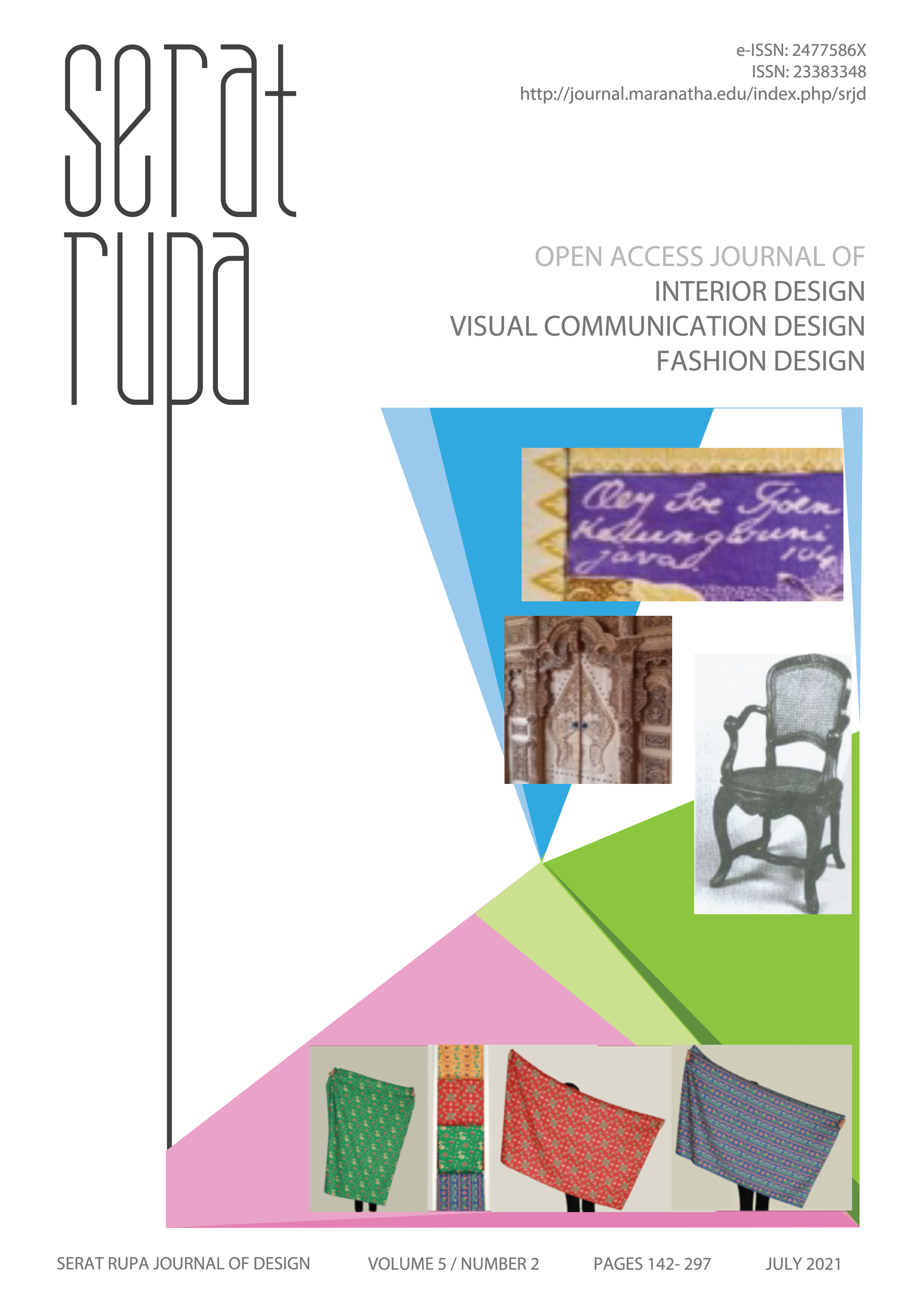JALUR REMPAH DAN KARAKTERISTIK BATIK BUKETAN PERANAKAN TIONGHOA TIGA GENERASI
Main Article Content
Abstract
The huge demand of spices triggered the Europeans to begin their voyage to South East Asia in the fifteenth century. But actually, the Chinese had known the maritime spice trading routes to South East Asia long before the European did. The focus of this research is the linkage between spice trading routes, acculturation in Java and its influence to Peranakan Chinese batik at the northern coast of Java. In this research, the study case is Oey Soe Tjoen buketan batik from Kedungwuni. Qualitative methods is used in this research, while the applied theories are acculturation theory and aesthetic morphology theory. The aesthetic morphology is utilized to identify both the characteristics similarities and differences from the first, second and third generation's Oey Soe Tjoen buketan batik. The aim of this research is to provide information about the connection between maritime spice trading routes and the evolution of textile in Indonesia. The acculturation in Java resulted in Peranakan Chinese batik, which also contributes to the development of batik cloth in Java. Moreover, this research can be a reference source for academicians, collectors and batik enthusiasts about the characteristic differences from the first, second and third generation of Oey Soe Tjoen batik.
Keywords: aesthetic morphology, buketan batik, Oey Soe Tjoen
Keywords: aesthetic morphology, buketan batik, Oey Soe Tjoen
Downloads
Download data is not yet available.
Article Details
How to Cite
Budianto, E. R., & Sunarya, Y. Y. (2021). JALUR REMPAH DAN KARAKTERISTIK BATIK BUKETAN PERANAKAN TIONGHOA TIGA GENERASI. Serat Rupa: Journal of Design, 5(2), 186–205. https://doi.org/10.28932/srjd.v5i2.3799
Section
Articles

